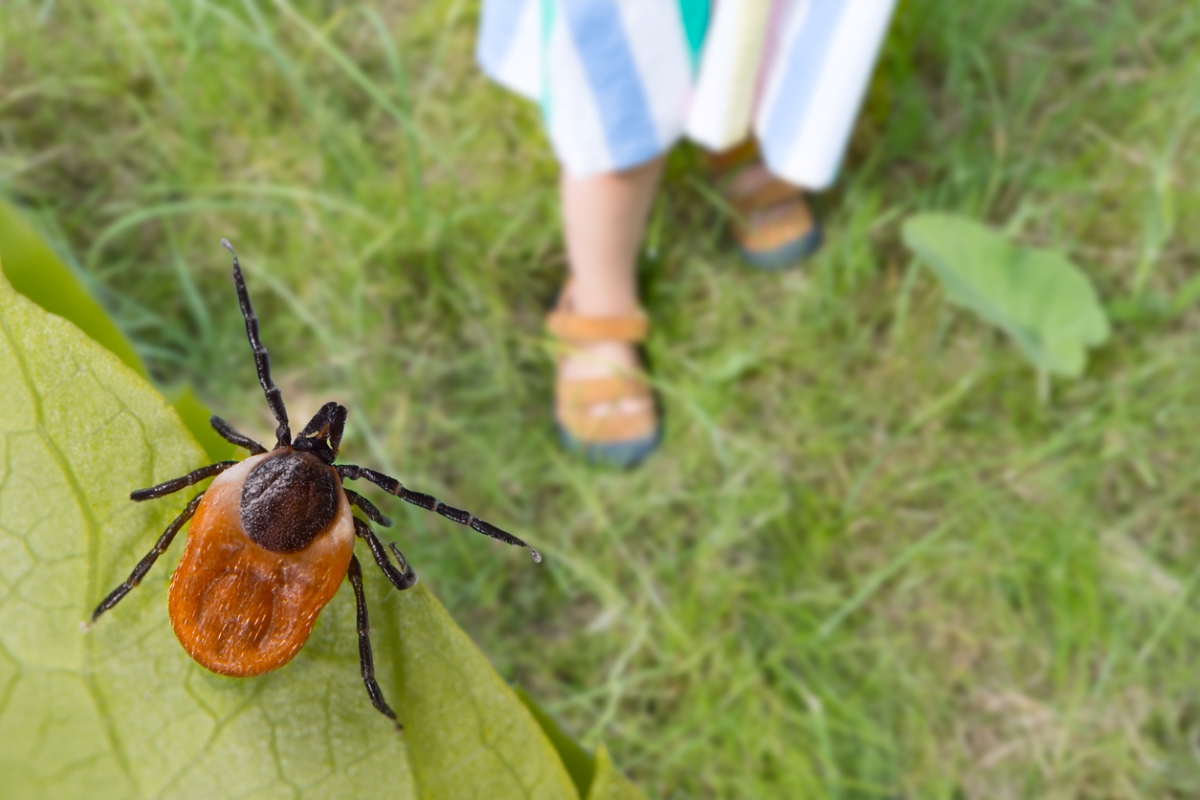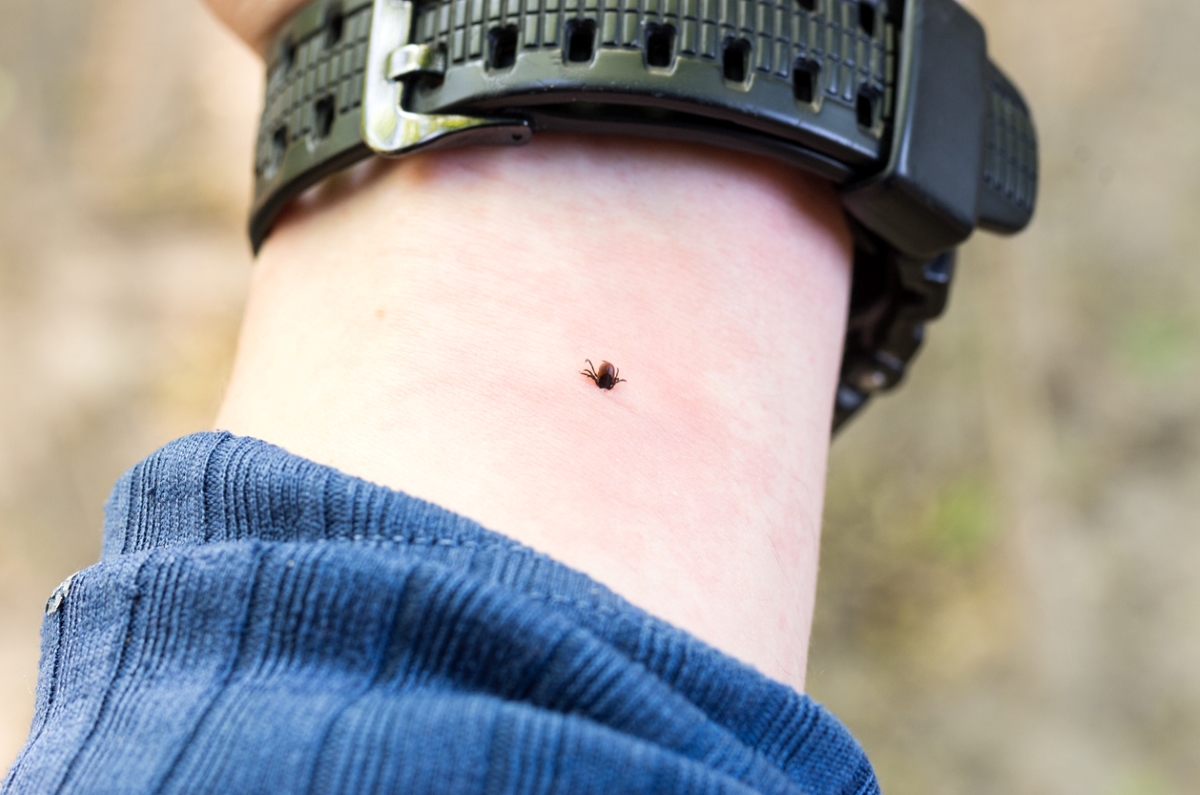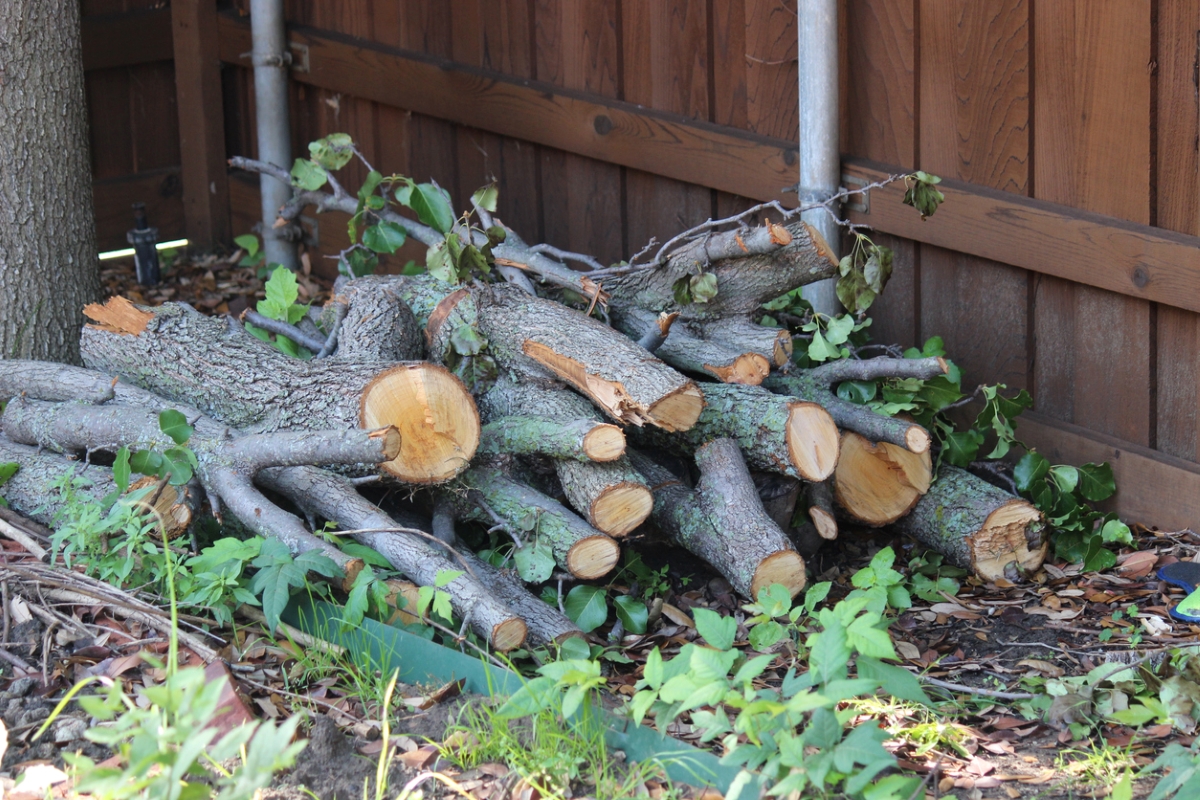

We may earn revenue from the products available on this page and participate in affiliate programs. Learn More ›
Ticks are a fact of outdoor life throughout the United States. These blood-feeding arachnids (joint-legged invertebrate animals) become active every year after the first frost. While every creature has its place in the food chain, you don’t want to become a link in that of a tick, which can spread numerous diseases. Finding a tick attached to a loved one (two- or four-legged!)—not to mention yourself—ends in an uncomfortable, decidedly gross removal process. Avoid taking tweezers to your loved ones by learning the best ways to get rid of ticks in your yard.
Why Tick Control is Important

Tick control in your yard is crucial due to the potential health risks posed by these tiny arachnids. They can transmit a variety of diseases, including Lyme disease, which can be dangerous to you, your children, and your pets. According to the CDC, approximately 476,000 Americans are diagnosed and treated for Lyme disease every year, with cases most commonly reported in the upper Midwest, Northeast, and mid-Atlantic. If Lyme disease isn’t enough of a concern, here are a few more reasons to ditch the ticks this season:
- Ticks can carry diseases. Ticks are known to transmit a variety of diseases to humans, including babesiosis, anaplasmosis, Lyme disease, and Rocky Mountain Spotted Fever, that can cause significant health issues and, in some cases, even be life-threatening. Tick control can reduce the risk of tick bites and lower the chances of contracting these diseases.
- They can harm livestock and pets. Infestations can lead to discomfort, itching, and irritation for both animals and people. In severe cases, tick infestations can cause secondary infections.
- Ticks can cause allergic reactions. Tick bites can trigger allergic reactions in some individuals. This can look like a patch of redness, swelling, itching, and in severe cases, anaphylaxis, a life-threatening allergic reaction.
By controlling ticks, you can safeguard the health and well-being of both humans and animals during tick season.

How to Get Rid of Ticks In Your Yard
To reduce the tick population in your yard and minimize the risk of getting bit by a tick, try following the multi-pronged approach below. If these tactics fail, you may need to call a pest control company, to get control of any ticks in your yard.
1. Remove plants that deer love.

Deer ticks (also known as the black-legged tick) are the ones most responsible for spreading Lyme disease, which has become an outright epidemic in parts of the Northeastern United States. When pondering the best ways for how to get rid of ticks, especially disease-carrying ones, you actually should start by deterring their hosts, deer.
Discourage the hungry visitors from entering your yard by eliminating their grazing favorites: tulips, hostas, daylilies, azaleas, rhododendron, euonymus, and Indian hawthorn. And, if you’ve now got holes in your garden, consider replacing them with more deer-resistant varieties like boxwood, butterfly bush, and daphne.
2. Add plants that ticks hate, too.
Certain shrubbery, like Japanese barberry, serve as excellent questing spots for ticks looking to hitch a ride on their next host. Fortunately, various plants, thanks to their powerful scent, discourage ticks and other pests (like fleas, mosquitoes, and gnats).
Herbs such as mint, rosemary, rue, pennyroyal, and wormwood, flowers like chrysanthemums, Mexican marigolds, the aptly named flea-bane daisy, and even garlic can help pull up the welcome mat and keep parasites at bay.
3. Mow often and maintain landscaping.
While ticks can travel anywhere, they are most prevalent in tall grass and low shrubbery. A wide swath of low grass isn’t their preference, so mow your lawn regularly. And to make it harder for ticks to hitch a ride into your yard, reduce heavy brush and ground cover bordering your property.
Also, keep leaves and other yard waste from accumulating around your shrubs. After feeding, a deer tick will drop off its host and can remain dormant in leaf litter until the following spring, when it will seek another blood meal. This is when people and pets are most in danger of infection, as the ticks may have ingested disease-causing pathogens from their previous meal that they can then transmit to their next host.
4. Clean up any woodpiles.

Ticks generally breed while on their host, but they lay eggs on the ground, seeking out dark, moist places. If you keep a woodpile outside, elevate it off the ground and stack it neatly, so that air can flow through to keep it dry. If it’s currently in a shaded area, relocate it to a sunny spot, away from your house, to make it less attractive to ticks.
A jumbled, shaded woodpile is also a perfect habitat for mice and other small rodents that often serve as the first host to tick larvae and nymphs. The fewer hosts in your yard, the less likely ticks will survive there.
5. Discourage small host animals.
While deer are a favorite host for ticks, many small mammals and birds serve as hosts and delivery vehicles for them as well. The white-footed mouse is a particularly common host, and the rise in the deer tick population is closely correlated with the prevalence of this rodent.
So, in addition to tidying up your woodpile, maintain any stonewalls around your property so they don’t become a breeding ground for critters. And while birds can be a joy to observe, if you have a tick problem, banish bird feeders, or locate them far from the house. Not only do birds serve as hosts for ticks, spilled seed will draw small rodent hosts.
6. Spray or spread a natural tick repellent.

When in doubt, go the natural route. If you want to get rid of ticks in your backyard without utilizing chemicals, there are plenty of natural solutions to keep your property tick-free. A few alternatives to conventional repellents include essential oils like cedarwood, neem, citronella, eucalyptus, rosemary, geranium, nutmeg, clove, garlic, and peppermint oil. Research conducted by the Journal of Medical Entomology suggests these oils can be just as effective as synthetic solutions for killing ticks. Another natural alternative for ridding your yard of ticks is diatomaceous earth (DE). We suggest using food-grade diatomaceous earth, which is low in crystalline silica and safe for humans; filter-grade DE is potentially toxic to humans and pets.
7. Try tick tubes.
Another potentially effective tick prevention tool is a tick tube. They are an easy no-spray and no-mess way to kill ticks and prevent the spread of diseases. Simply place the tubes around areas that attract mice such as wood piles, brush, sheds, gardens, and wooded areas.
8. Add lava rock or pebbles to certain areas.
Use lava rock or pebble mulch in garden beds to render these areas less hospitable for ticks. Rough textures not only provide an added level of protection, but they also bring extra curb appeal to your home in the bargain.
9. Create lawn-free zones.

Another way to create a tick-free zone is by hardscaping areas of your property. Use flagstones, patio blocks, paving stones or decking to define spaces for picnicking or barbecuing. The more lawn-free surfaces you can create, the less likely ticks are to appear.

10. Use the right insecticide.
There are a number of insecticides (generally synthetic pyrethroids, which mimic the natural insecticidal properties of chrysanthemum) that can successfully help reduce tick populations. The good news is that you don’t need to treat your entire yard if it’s well-kept and receives ample sun. The downside is, of course, that insecticides can harm people, animals and the environment and should only be used as a last resort.
Ticks are most often found on the borders of a home’s property, especially if it borders a wooded area, so you’ll want to spray the perimeter of your place with insecticide or a natural alternative, like cedar oil. A good product to try is TropiClean Natural Flea & Tick Yard Spray, a top pick in our guide to the best tick sprays for your yard. It contains several potent natural ingredients that are effective against ticks, fleas, and other pests.
Final Thoughts
One thing’s for certain: Proactive measures in your yard can go a long way in safeguarding your health and your pets. While ticks may be a natural part of outdoor life, their potential to spread diseases should not be underestimated. With a few simple strategies like the ones we’ve highlighted above, you can significantly reduce the risk of tick encounters for you, your loved ones, and your pets. Once you’ve gotten rid of ticks in your yard, learn what to do if you find ticks in the house.
